I’ve often sat in front of trees and wondered if it’s a good time to prune or if I’m better off waiting. Even when the trade-offs are clear, it can be difficult to figure out the best approach year after year in a young tree’s life.
One of the best ways to overcome this is to try different approaches and see which work best in a given situation.
I gave this a try with a group of exposed root black and red pines this year. I pruned some in June, some in August, and the rest grew freely all year. Here’s what they look like this week.
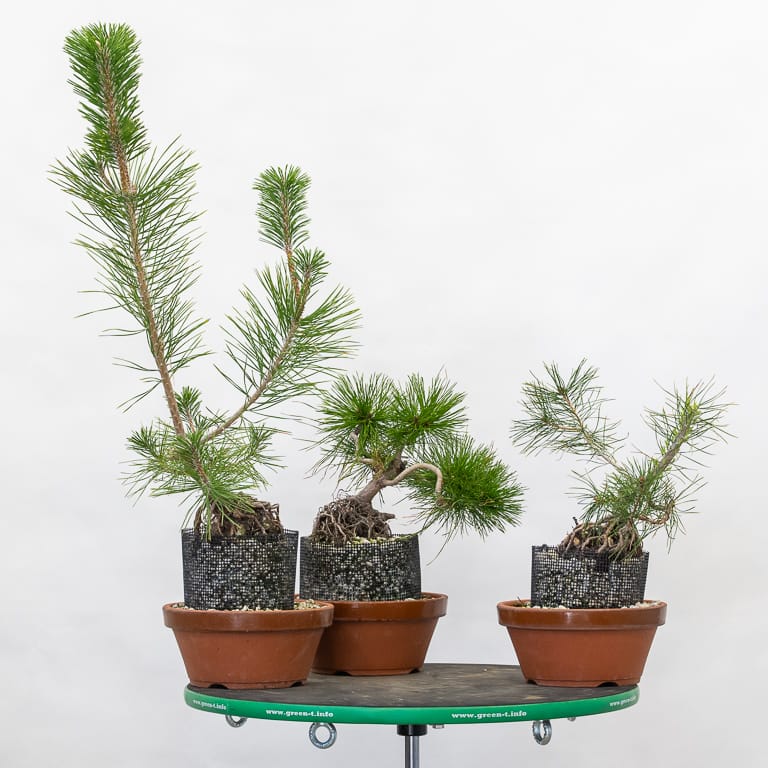
Black pine (left), and two red pines
I pruned the center tree in June, the right-hand tree in August, and I didn’t prune the tree on the left.
The center tree was pruned – not decandled – in June. I wanted to generate new shoots in the tree’s interior so I cut past where I’d normally decandle to a point where there were still old needles. The result is full tree with healthy foliage.
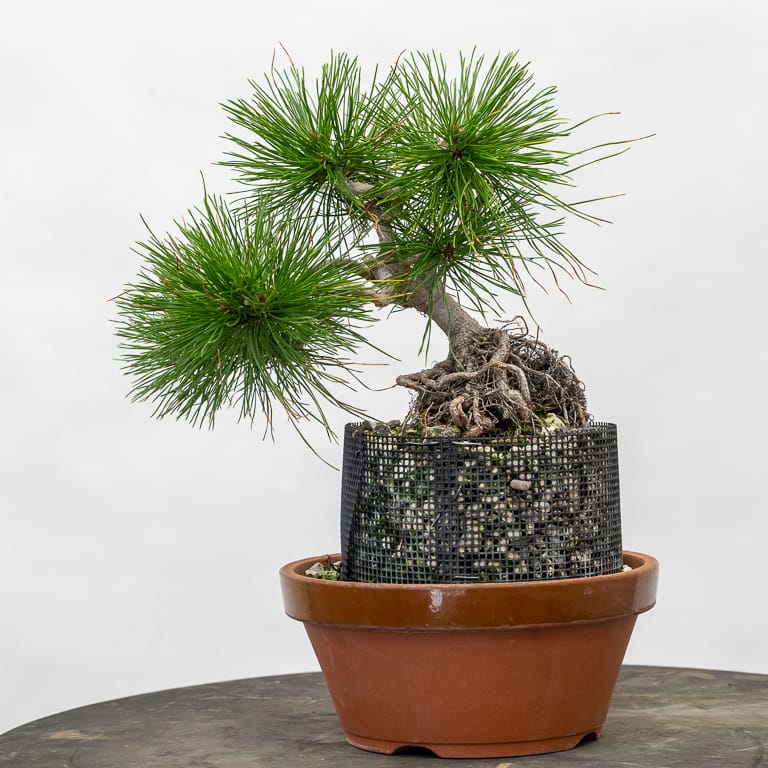
Red pine pruned in June
I’ve referred to this technique as “cutback-decandling” for lack of a better term, but it simply means pruning to a point midway along a branch that grew in a previous year in hopes of stimulating needle buds.
Here’s a close-up of the first branch on the right.
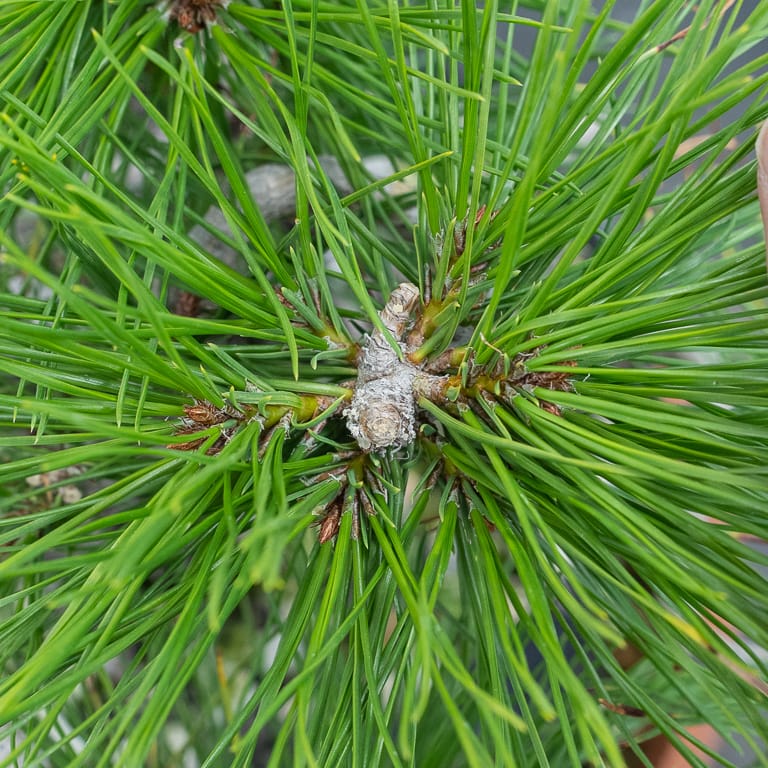
Four-month old needle buds
Cutting back pines in June is a great way to generate new buds in the tree’s interior at the cost of slowing down the rate at which the trunk thickens.
Two months after I pruned the above tree, I pruned another batch of pines. I’d been on the fence about pruning all of my pines in June and held off, but seeing so many dense new buds encouraged me to give it a try.
Typically, cutting pines this late in the season is good for stimulating back buds that begin growing in fall but don’t fully mature for an additional year. And that’s exactly what happened.
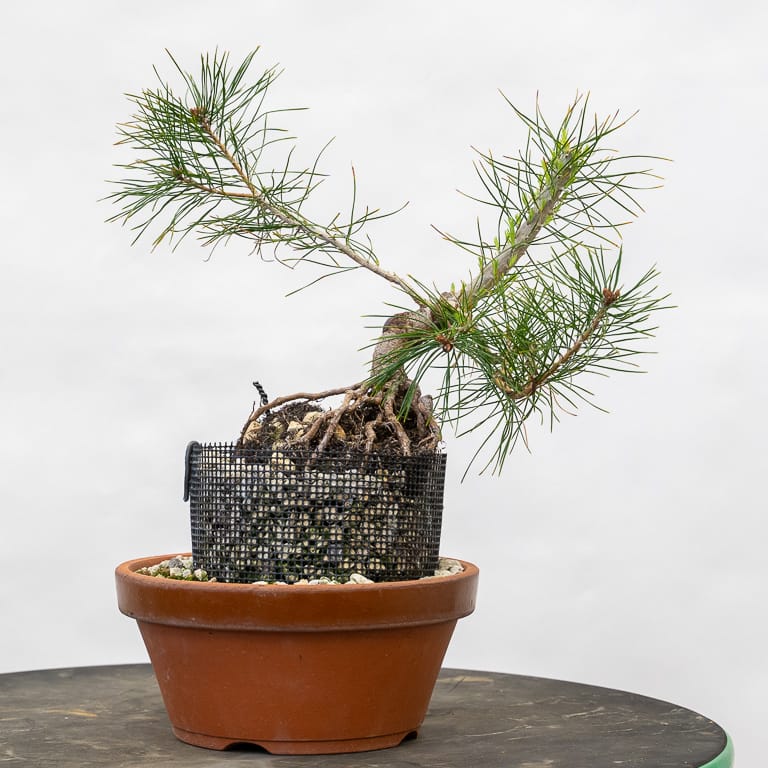
Red pine pruned in August
Unlike the tree pruned in June, this tree produced new buds that have yet to mature. The other difference is more subtle. While the tree pruned in June developed needle buds near the points at which I cut, the tree pruned later developed far more needle buds. On the main trunk alone, almost every pair of needles now supports a new shoot.
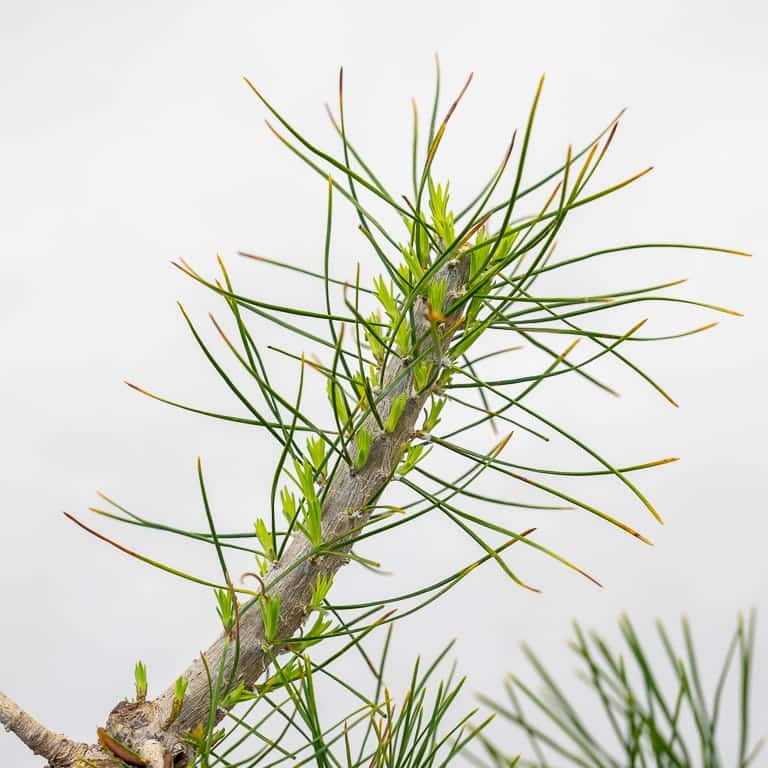
Needle buds on almost every pair of needles
A few shoots even appeared on the lower branches – a sign that the tree is trying hard to generate new foliage.
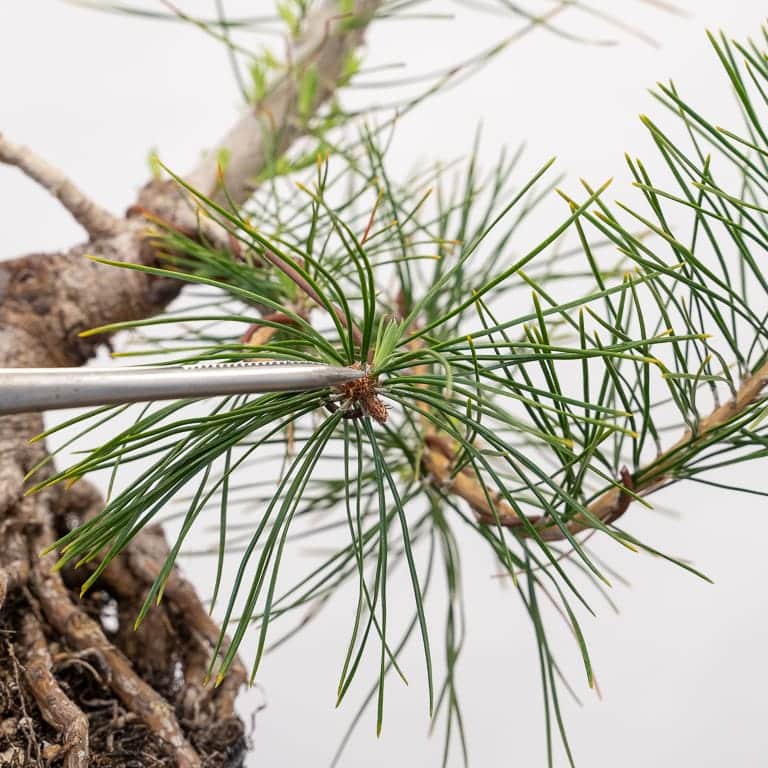
New shoot on a terminal bud
Although pruning into old needles in August is a great way to produce back buds, it’s not a sure thing. Some trees had a moderate response, while others only produced a few needle buds. As I’ve learned from past experiments, the later I cut, the lower the likelihood that the tree will respond with lots of new buds.
The final tree is a control of sorts.
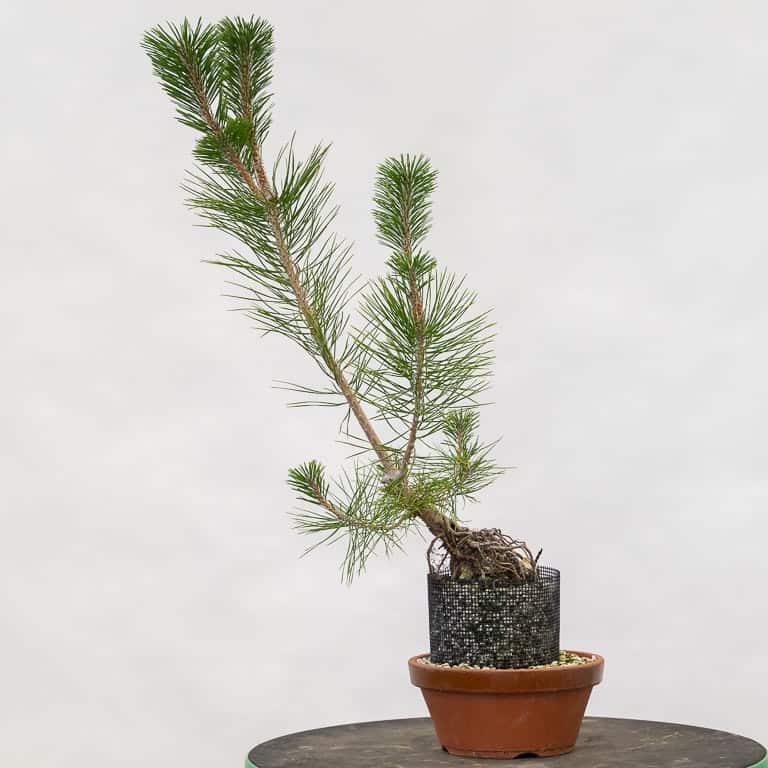
Black pine
This is closer to what the other two trees looked like at the beginning of the year – long sacrifice branches and slender shoots just above the exposed roots.
Letting the tree grow freely sets it up for more rapid growth next year. And as long as there are needles or small shoots on the lowest branches, I can cut back using the above techniques when I want to stimulate new branches.
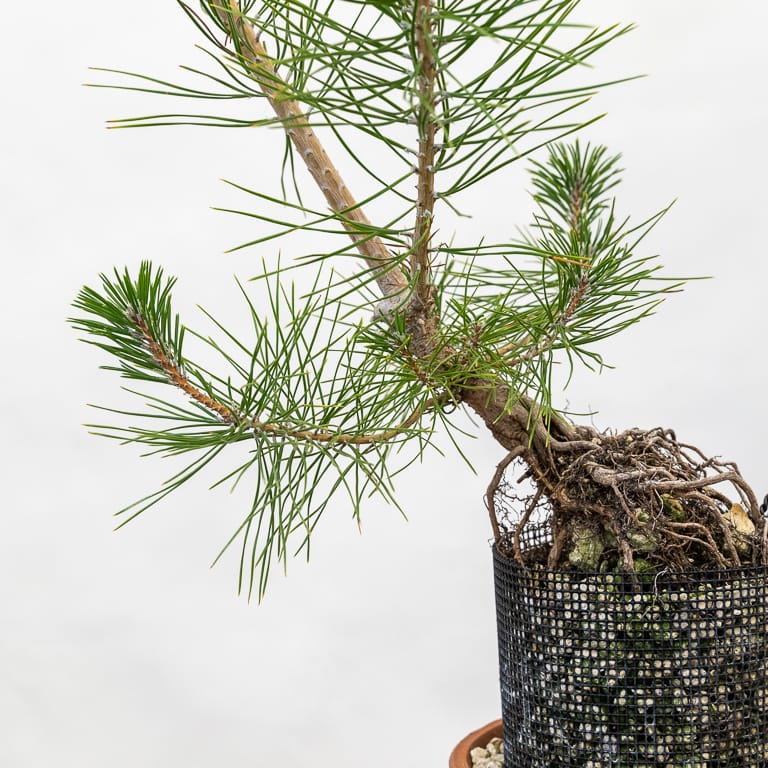
Young shoots – the key to the tree’s future
Here’s a brief review of the pros and cons of each approach:
- Pruning in June: produces dense foliage within a single growing season at the cost of slowed trunk thickening
- Pruning in August: produces the most back buds but risks dieback, slows thickening, and looks awkward for up to 18 months
- Not pruning: produces the most thickening but does nothing to promote new branches in the tree’s interior
It may be hard at first to know which approach makes the most sense for a given tree, but after trying different approaches and seeing the results firsthand, it gets easier to generate the exact kind of growth you’re looking for.
Subscribe to Bonsai Tonight
New Posts Delivered Every Tuesday and Friday
Peter Grisdale says
Wow the amount of buds on that red is incredible !
Jonas Dupuich says
Thanks Peter, they can really produce a lot!
Michael M says
Jonas, You do realize that this information about the habits of JB Pine is about as important as the discovery of candle cutting 50 years ago! There is now a way to get much shorter branching than before. So what if it takes 2 years to get the mature bud to grow instead of 1 year.
This looks like a way to redesign a pine that has gotten too leggy. Can one encourage back buds on to two or three year old wood? Does there need to be a viable needle pair on the wood?
Thanks
Jonas Dupuich says
Ha, thanks Michael! You put your finger on the most important issue – the presence or lack of viable needles. The odds of getting new buds to pop when viable needles are present are great, assuming several other factors (will do a post on this). The odds of getting buds to pop when there are no needles is very low. The best way to get buds to pop without needles is to a) get the tree really healthy, and b) cut back significantly, but not past old needles. If that approach doesn’t work, grafting is a great option.